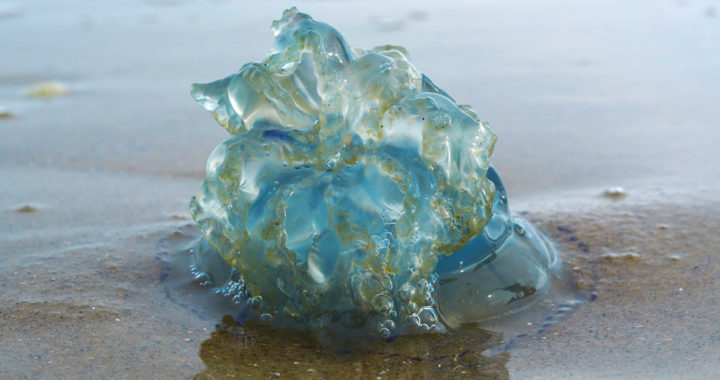The effects of jellyfish sting vary depending on the type of species. Stings from true jellyfish or species under the Scyphozoa class mostly trigger slightly painful reactions. On the other hand, stings from some box jellyfish or species from the Cubozoa class can be extremely painful and fatal. Nevertheless, regardless of the type of species, it is always better to avoid a close encounter with jellies or observe best measures when swimming in seawater.
How to Avoid Getting Stung by a Jellyfish
1. Avoid areas frequented or populated by jellyfish
One of the obvious and practical ways to avoid getting stung by a jellyfish is to avoid swimming in waters where they frequent. Doing so involves looking for warning signs that range from written and graphical signage to purple flags indicating jellyfish sightings.
There are areas with no warning signs or established protocols regarding jellyfish sightings and jellyfish stings. When planning a trip to a beach or any coastal water, it is better to gather as much information as possible through the Internet, peers who are familiar with the area, or even the local population.
2. Consider the weather when going for a swim
Different environmental factors drive jellyfish close to coastal waters. For instance, strong winds and currents push these jellies near the shores. This is especially true for Scyphozoans that lack considerable mobility.
Most species under the Scyphozoa and Cubozoa classes of jellyfish also enjoy warm waters. Hence, they frequent seawaters in regions with a tropical climate. In addition, they often reach their medusa phase during the warm season. Upon reaching this phase, these jellies become free-swimming while some can even exert considerable mobility.
3. Wear a protective outfit that covers the entire body
It is important to note that most jellyfish stings happen by accident or more specifically, when humans accidentally go near these jellies. In addition, the tentacles of these jellies can be long. Some species of box jellyfish can have tentacles as long as 10 feet. Also, box jellyfish actively hunt their preys and neutralize their predators. They are good and fast swimmers too.
Another way to avoid jellyfish sting is to wear a protective outfit, particularly a wetsuit that would cover not just the upper body but also the arms and legs. Take note that venom-containing stinging cells called nematocysts found on the tentacles of jellies are triggered not by touch but by chemicals on the outer layer of species, including chemicals on humans skin.
4. Remember that jellyfish sting can also occur on shore
Be mindful about the surrounding environments. Most jellies and their tentacles are hard to see both in waters and on land because their appearance ranges from being translucent to completely transparent. Some jellies would look as if they are discarded plastic bags.
Avoid touching jellies that have washed ashore. Even if they are dead or their tentacles have been severed from their main body, they can still cause a sting. Another way to avoid accidental jellyfish sting on shore is to wear shoes or slippers.
5. Wear protective lotion formulated against jellyfish
Several sunscreens or sunblock lotions sold in the market have been formulated with chemicals that can repel jellyfish. Some evidence indicates that these products can be effective in avoiding getting stung by a jellyfish.
However, it is still important not to depend on these products alone. Some reports have also noted that they are not effective all the time. Nevertheless, it is better to observe the measures mentioned above to avoid jellyfish sting.
